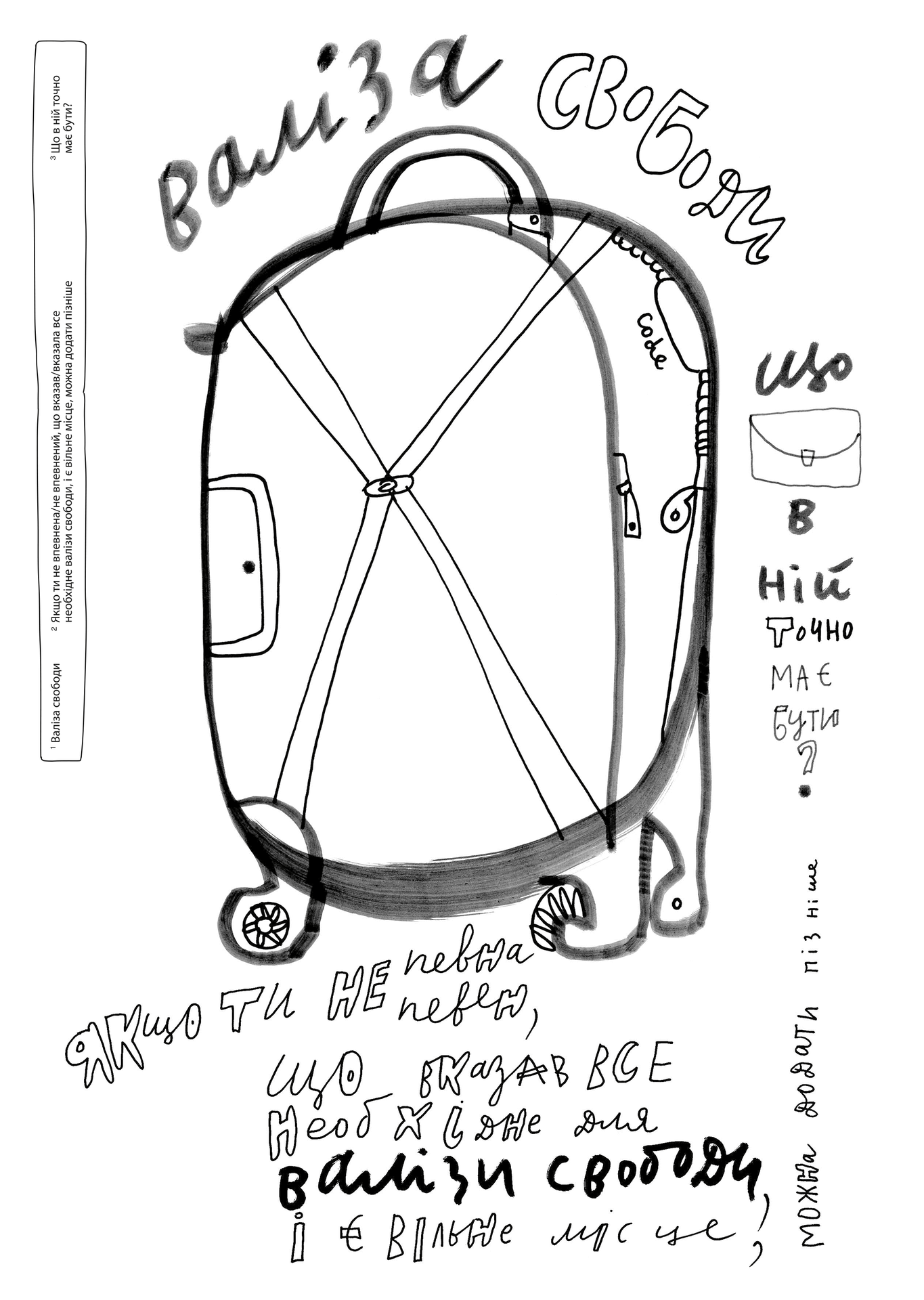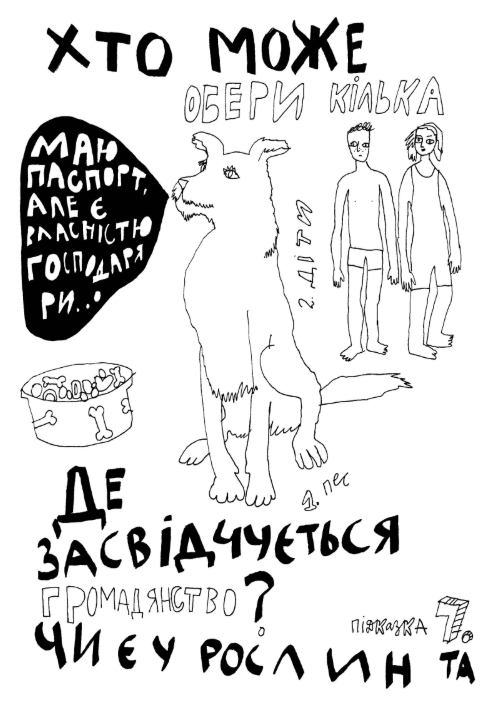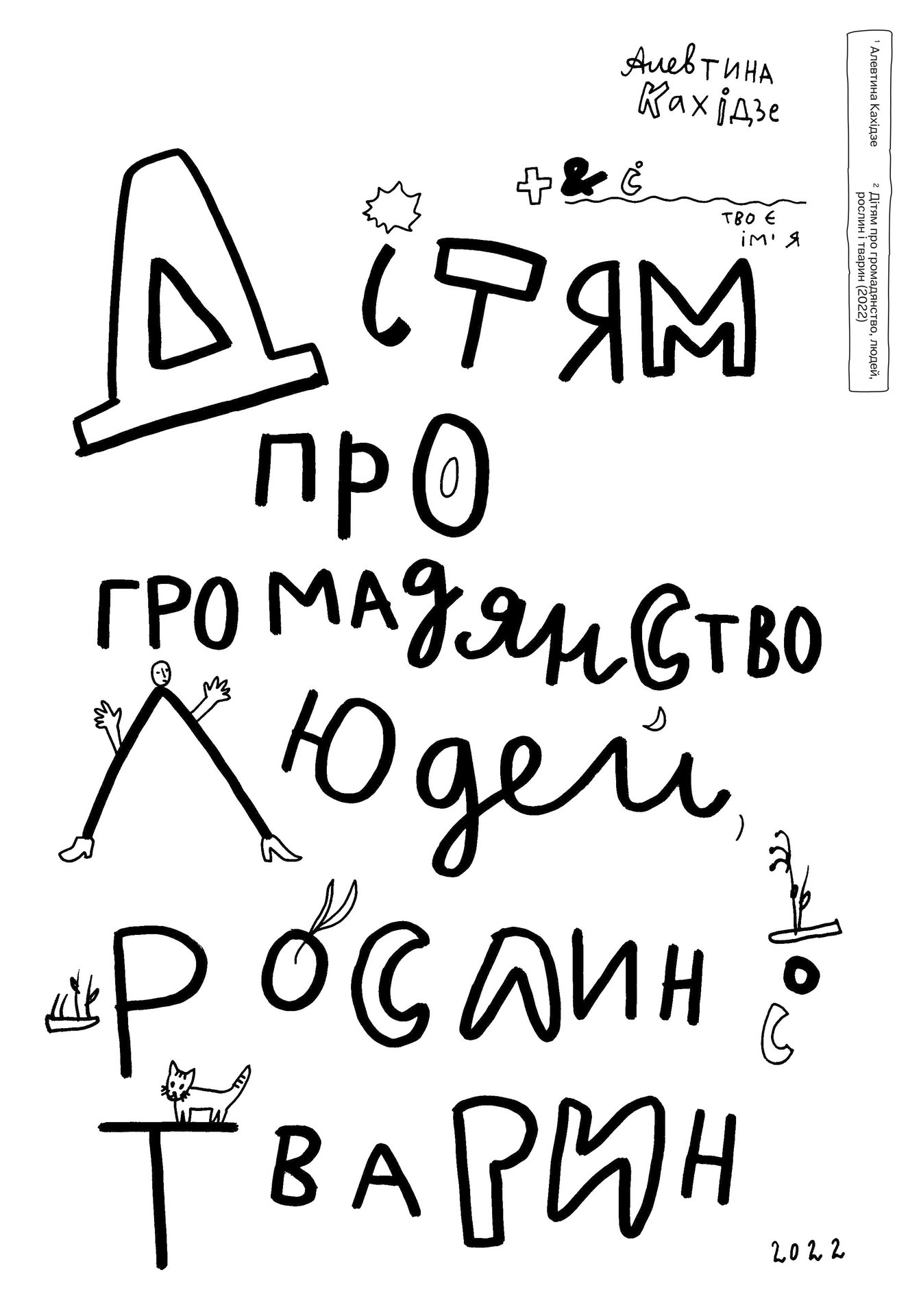For teachers
We are giving teachers of Ukrainian schools around the world printable Paintings, a ready-made course, and detailed recommendations on how to use our materials to begin exploring issues with your child about their freedom, imagination, happiness, and the power of their own creativity and identity.
How to prepare?
To begin, watch the opening speech with the author of the Paintings, artist Alevtina Kakhidze.
Alevtina is the author of two Paintings, which are the basis of the Freedom Diaries project. Ukrainian feminist artist, performance artist, media artist, curator and gardener. Co-founder of a private residency for foreign artists in the village of Muzychi.
UN Envoy for Tolerance in Ukraine since 2018
Workshop with Paintings
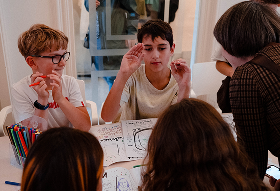
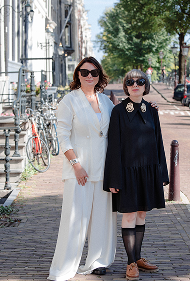
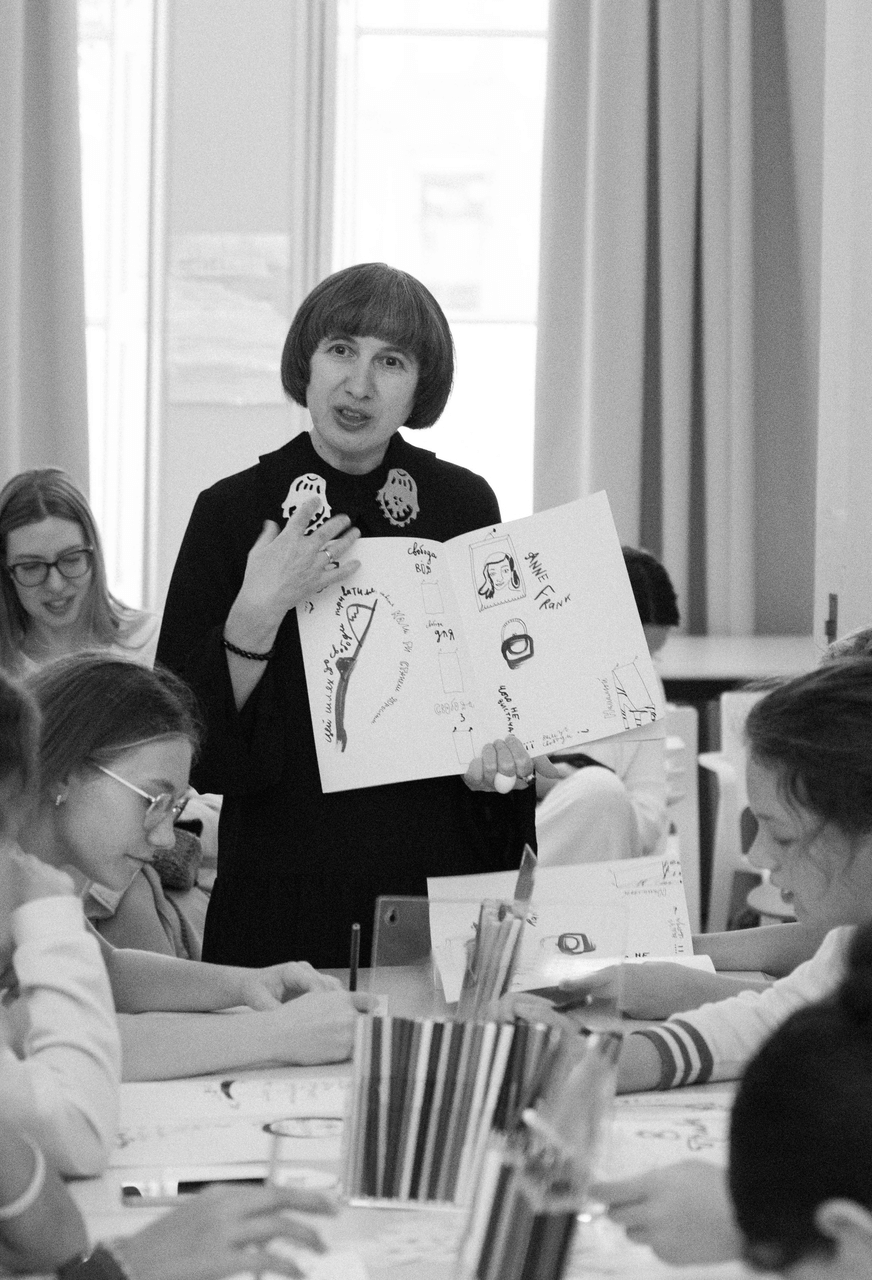
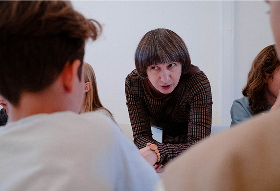
How to work with Paintings?
We created this course with the hope of helping you explore serious topics with your children through dialogue and art, drawing on your own feelings and the support of a caring adult. Along the way, both students and teachers will encounter some discomfort. There will be strong feelings and sometimes resistance. This is completely normal. Just as trees grow stronger in the face of wind and rain, so the human psyche grows stronger through reflection, acceptance, and exploration.
Two Paintings allow for 24 lessons. The materials are developed taking into account the principles of trauma-informed pedagogy and modern methods of art education. We recommend using it as part of the Ukrainian studies component in Ukrainian schools abroad and schools in Ukraine as part of the art program or courses “I Explore the World”, “Civic Education”, as well as during educational hours. This is a tool that combines art, therapy and work with Ukrainian identity.
The Freedom Diaries project guidelines are designed to support teachers of Ukrainian schools abroad in working with two paintings by Ukrainian artist Alevtina Kakhidze. These materials are intended for systematic pedagogical work with children aged 9-15, combining art education with the exploration of themes of freedom, memory, and conscious citizenship.
The project was born from an understanding of the special needs of Ukrainian children who found themselves abroad as a result of Russia’s full-scale invasion of Ukraine. It offers a safe space and effective tools for exploring their own identity through interaction with visual art.
A word for teachers from a psychologist.
The journey through Alevtina Kakhidze’s paintings is inspiring. With a suitcase of freedom, remembering the past, teenagers head into the future. They think about freedom, security, loyalty and honesty, about friends and family. They travel in their own imagination and across state borders. They delve into the depths of memory, feel joy and sadness. They learn more about the social structure, communities and citizenship. They discuss resettlement and immigration, plan for the future, exploring their own identity.
This course was created with the hope of revealing serious topics through dialogues and art, relying on their own feelings and a sensitive adult nearby. The structure of the classes is built in such a way as to “contain” (process) possible complex reactions of students and teach them to cope with emotions. It is the recognition, acceptance and living of feelings that creates the basis for the development of a stable, strong personality.
What should a teacher do when painful topics arise during a lesson
Why do painful topics arise?
Our experience stays with us for life. Experiences associated with a risk to life or loss are potentially traumatic. They cause pain, fear, anger, powerlessness, feelings of loneliness, etc. If a person had enough internal strength and external support, even the most difficult events are experienced and become a thing of the past. They affect life, but do not stop its flow. It is like a tree whose branch was broken by a storm, but did not destroy the tree itself: the place of the break will heal and cease to bother, although a trace will remain.
If the resource was not enough, then the experience is not experienced and remains in the psyche in a “capsule”, waiting for the right opportunity to express it. At this time, protective mechanisms work: a person may not remember something bad and live a normal life. But sometimes a certain situation or image reminds of a traumatic experience – then the pain returns. What causes memories and restores the pain is called a trigger.
In an atmosphere of acceptance and understanding, the child’s psyche feels safe, and the probability that it will touch on suppressed feelings is high. Such an atmosphere is created by classes. Therefore, the emotional reaction of children during lessons is a normal reaction of a healthy psyche. It can manifest itself actively (crying, anger, anxiety, the desire to break something, the devaluation of the entire lesson) or passively (apathy, unwillingness to complete the task, self-removal).
What to do?
If a child demonstrates complex, unresolved feelings through behavior, body language, or words, it is important to follow this algorithm:
- Accept this behavior as expected and normal;
- Name what is happening and normalize it (“you are crying,” “you are angry,” “you are sad” is a normal reaction). Here it is important to reflect the child’s condition, but not to stop, not to treat, not to immerse yourself in feelings with them. You just need to be there. Do not distract, do not moralize, do not entertain, do not “turn it into a resource” — give the child time to experience their emotions. Believe that they will cope. This usually takes 5–15 minutes;
- Continue the lesson as planned;
- If necessary, ask the child if they need help and refer them to the appropriate specialist or loved ones (“I see that you had a hard time today. Do you think you want to talk to someone about it? Who could it be from your family? Maybe you would like to talk to a psychologist?”).
If the child is constantly “out of sorts,” has triggers in many lessons, interferes with work, is aggressive, or, conversely, tries to please everyone, and their own feelings remain incomprehensible, it is important to refer the parents to receive professional psychological help.
What to do if the trigger affected the teacher?
The topics of identity, freedom, and migration are important and complex. When working with children, we often relive our own experiences and can touch on our own vulnerable points. It is natural to feel and react.
It is important not to ignore your condition, but to find support in time, take care of yourself and seek professional help if necessary.


Questions and answers
-
How to integrate painting into learning?
We recommend using it in Ukrainian Sunday schools as part of the Ukrainian studies component, as well as in Ukraine as part of the art program or the courses “I Explore the World” and “Civic Education. It is a tool that combines art, therapy, and work with Ukrainian identity.
-
What are these materials?
These are methodological recommendations for teachers of Ukrainian schools abroad. They are based on two paintings by Alevtina Kakhidze and help work with the themes of freedom, memory, and identity through art education. The materials are designed for children aged 9–15.
-
Why are they needed?
The project addresses the specific needs of Ukrainian children displaced abroad by war. It creates a safe space, helps them explore their own identity, and maintains connections between generations.
-
What age groups are the materials suitable for?
The course is adapted for three groups: 9–11, 12–13, and 14–15 years old. The manual explains how to adapt the lessons to each age group.
-
How many classes can be held?
The paintings allow for 24 classes. All of them are built taking into account trauma-informed pedagogy and modern art techniques.
-
Are there ready-made lesson scenarios?
Yes. Fill out the form for teachers and you will receive a full set of scripts, coloring pages, written recommendations from a psychologist, and a video with the artist’s words.
-
What pedagogical approaches are the materials based on?
• Françoise Barb-Gall’s Methodology — a child-centered approach to working with art.
• Trauma-Informed Pedagogy — principles of safety, trust, and support.
• Visual Thinking Strategies (VTS) — critical thinking through three basic questions.
• Philosophy for Children — developing the ability to ask deep questions. -
What makes Alevtina Kakhidze’s paintings unique?
They combine childlike immediacy with deep philosophical questions. Each page contains thought-provoking visuals, texts, symbols, and metaphors.
Freedom Diaries is not just educational materials, but a bridge between the culture, history, and future of our children.
-
Is it possible to conduct classes without prior art therapy experience?
Yes. The materials contain detailed instructions and recommendations that will help you organize a safe and warm conversation with children.
-
How is each lesson structured?
1. Immersion – silent contemplation, first impressions.
2. Exploration – working with images, texts, questions, associations.
3. Creativity – drawing, writing exercises, role-playing, projects.
4. Reflection – personal impressions, discussion, “suitcase for home.” -
How long does the class last?
Average 45–60 minutes. You can shorten or extend the time depending on your group and circumstances.
-
Who worked on the materials?
The materials were created thanks to the joint work of artist Alevtina Kakhidze, creative director of the project Maria Proshkovskaya, with the involvement of psychologists and educational experts.
-
What is a “suitcase home”?
This is an alternative to homework: family interviews, creative practices, digital experiments, research missions. The child chooses what interests them.
-
What principles underlie the work?
• Flexibility and adaptability.
• A value-free environment.
• Cultural inclusiveness.
• Emotional safety.
• Consideration of different age groups. -
How do I assess whether the course has been completed, is there an evaluation system?
There is no formal assessment in this course. Its goal is not to test knowledge, but to create a space for children to feel, speak, and create. The sign that the course has been completed is the process itself: when children step by step touch on the themes of freedom, memory, and the future, draw, share their own stories, and ask questions. What is important is not the result on paper, but the inner movement: if the child was able to express his feelings, hear others, and see something new in his own imagination, this is the completion of the training.
-
Is there methodological support?
Yes. You will receive lesson scenarios, advice from a psychologist and videos from an artist that will help you take the first step and build a conversation with children. The materials are designed to make it easy for an adult to start: find the words to ask questions, interest children and make the lesson lively and meaningful. If difficult feelings or unexpected reactions arise in the process, the method contains advice on how to endure them and where to pay attention, so that in the end this journey is easy and relaxed
-
How to include materials in the program?
Paintings can be integrated into various programs and courses. In art classes, they can become practical tasks for drawing, creating stories or collages, where working with images is naturally combined with a conversation about freedom and identity. In the course “I explore the world” they can easily be used as part of a topic about a person, community or cultural heritage, because through drawings and dialogue, children discover not only personal, but also social issues. In civic education, paintings help to talk about values, rights and responsibilities – artistic images make these topics understandable, alive and close. And during educational hours they can become the beginning of a sincere conversation in the classroom: it is enough to choose one page or question and dedicate an entire meeting to it.
-
Do I need to submit a formal request to work with the materials?
No, this is not required. You can immediately use all the materials available on the site and include them in your classes. We trust your professionalism and sensitivity to how you will integrate them into your program. At the same time, it is very important for us to hear your experience: please share your feedback on how children react to the tasks and what topics are opened up for them – this will help improve the course.




